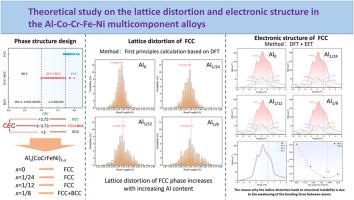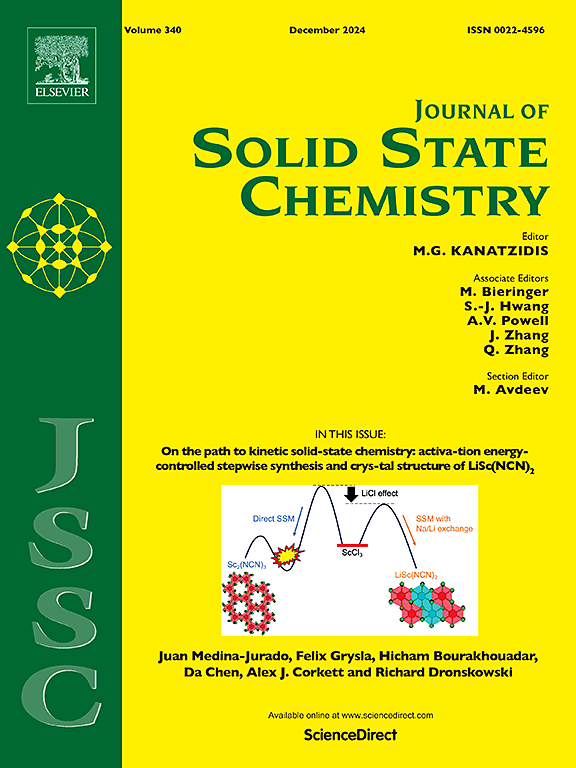铝-铜-铬-铪多组分合金的晶格畸变和电子结构理论研究
IF 3.2
3区 化学
Q2 CHEMISTRY, INORGANIC & NUCLEAR
引用次数: 0
摘要
目前,多组分合金(MCA)的相结构设计主要基于价电子浓度(VEC)。本文根据固体和分子经验电子理论(EET)对价电子的分类,对价电子浓度进行了进一步的剖析,发现共价电子浓度(CEC)可作为确定多组分合金相结构的标准。根据共价电子浓度设计了 Alx(CoCrFeNi)1-x(x = 0、1/24、1/12 和 1/8)合金。结合密度泛函理论(DFT)和电子能谱分析(EET),研究了铝含量对合金 FCC 相晶格畸变的影响。结果表明,随着铝含量的增加,FCC 相的晶格畸变程度逐渐增大,在相结构转变之前,原子间键合减弱。当铝含量为 9.48%时,合金达到了相结构转变的临界点。本文章由计算机程序翻译,如有差异,请以英文原文为准。

Theoretical study on the lattice distortion and electronic structure in the Al–Co–Cr–Fe–Ni multicomponent alloys
At present, the phase structure design for multicomponent alloys (MCAs) is mainly based on the valence electron concentration (VEC). In this work, based on the classification of valence electrons by the empirical electron theory of solid and molecule (EET), the VEC is further dissected and found that the covalent electron concentration (CEC) can be used as a criterion for determining the phase structure of MCAs. The Alx(CoCrFeNi)1-x (x = 0, 1/24, 1/12 and 1/8) alloys are designed on the basis of the CEC. The effect of Al content on the lattice distortion in the FCC phase of the alloys by combining density functional theory (DFT) and EET. The results show that the degree of lattice distortion in the FCC phase gradually increases with the increase of Al content and the interatomic bonding decreases before the phase structure transition. The alloy reaches the criticality of the phase structure transition when the Al content is 9.48 at.%.
求助全文
通过发布文献求助,成功后即可免费获取论文全文。
去求助
来源期刊

Journal of Solid State Chemistry
化学-无机化学与核化学
CiteScore
6.00
自引率
9.10%
发文量
848
审稿时长
25 days
期刊介绍:
Covering major developments in the field of solid state chemistry and related areas such as ceramics and amorphous materials, the Journal of Solid State Chemistry features studies of chemical, structural, thermodynamic, electronic, magnetic, and optical properties and processes in solids.
 求助内容:
求助内容: 应助结果提醒方式:
应助结果提醒方式:


